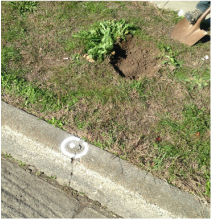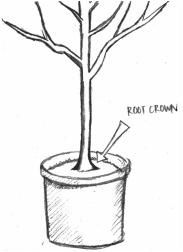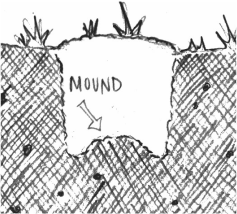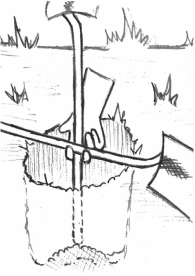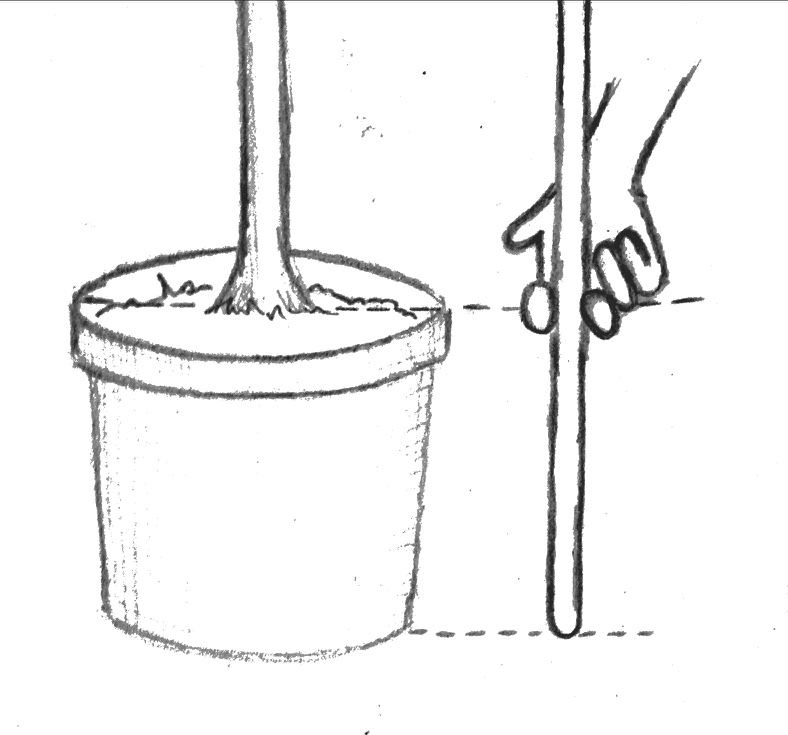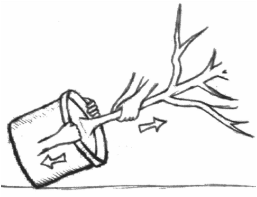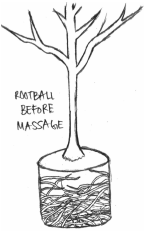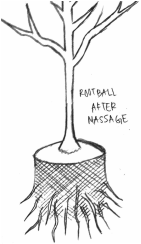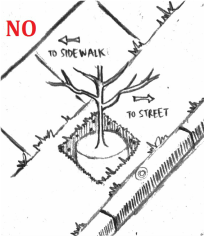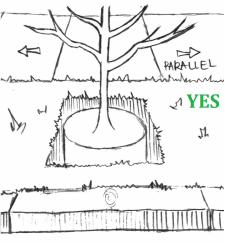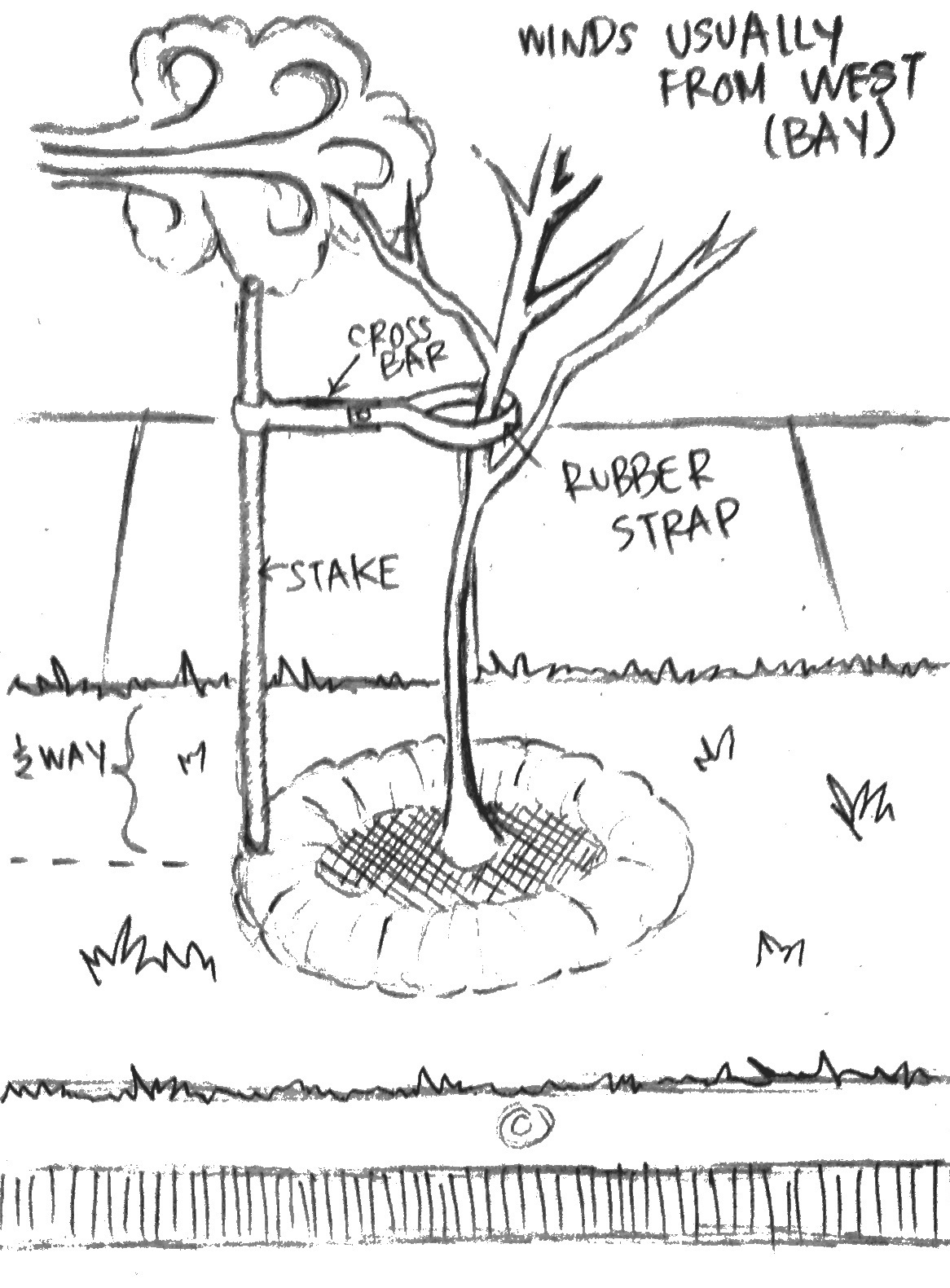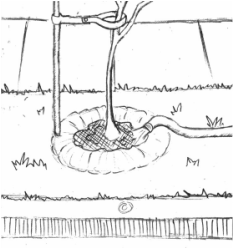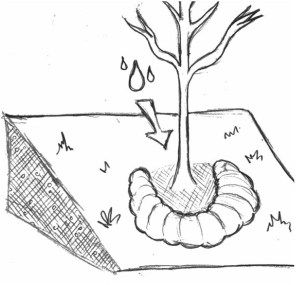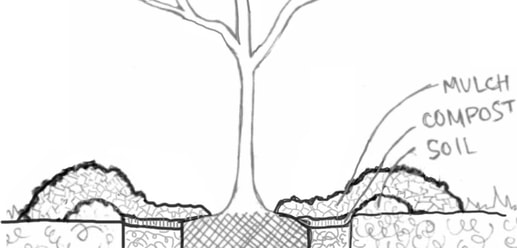How Do We Plant Our Trees?
There are many ways one can plant a tree. This is the way that we do it. We aim to have 2-3 people working at each tree.
Tools & Materials:
|
Digging Tools:
|
Steel Staking System (Option A):
|
Using a round-nosed shovel, dig a 3' x 3' square hole.
- Sometimes the soil will be too hard for a shovel. When that is the case, use a pick-mattock to loosen, then shovel the loose soil out, and repeat.
- When digging, you may notice the soil changing as you go deeper (in color, in texture, etc.) - try to keep the different layers of soil separate (see step 3).
|
Step 2 - Prepare the tree for planting:
|
Step 3 - Plant the tree:
|
|
Step 4 - Add stake(s):
|
Attach the rubber strap:
|
Step 5 - Form the watering berm:
|
Step 6 - Water the tree:
Step 7 - Add compost and mulch:
- Sprinkle a few handfuls of compost around the tree, over the rootball and the ring of soil inside the watering berm. We put the compost on top, rather than mixing it into the backfill, but you can gently incorporate the compost into the upper few inches of soil if you like.
- Add one or two 15-gallon containers of mulch (wood chips). Dump the wood chips all around the tree. Use enough to cover the compost, watering berm, and any other bare soil. Then smooth it with your gloved hands, as though you were icing a cake. The mulch helps retain moisture in the soil, insulates the soil under the hot sun, deprives weeds of light, and slowly breaks down to provide organic material to the soil. You should expect to need more mulch every year, as the old mulch breaks down or blows away.
- Do not pile up any new soil, compost, or mulch against the root crown (base of the trunk). Just brush away these materials to keep the root crown dry and exposed to light and air.
Step 8 - Clean up:
- For pedestrian safety, the height of the material in the planting strip should be level with the surrounding pavement. Back-fill the opened ground with soil or mulch until it is flush with the walkway.
- Return all nursery pots, as well as the tarp, tools, picked-up trash, etc. to the truck to return to headquarters. Nothing should remain at the site except the newly planted tree - staked, composted, mulched, and watered.
- Sweep the sidewalk of any residual soil. Sweep soil onto the planting strip, not the gutter or street. A square-nosed shovel is good for scraping soil off the sidewalk, followed by the broom for a final clean-up.
Step 9 - Take a picture!
Celebrate all of your hard work with a picture! Please send it to us so we can share it with the world that you just helped make Oakland a little greener and a little cleaner. ;)
NOTE: We are updating our PDF to match these new instructions, but you will soon be able to download full guide as a PDF here.
